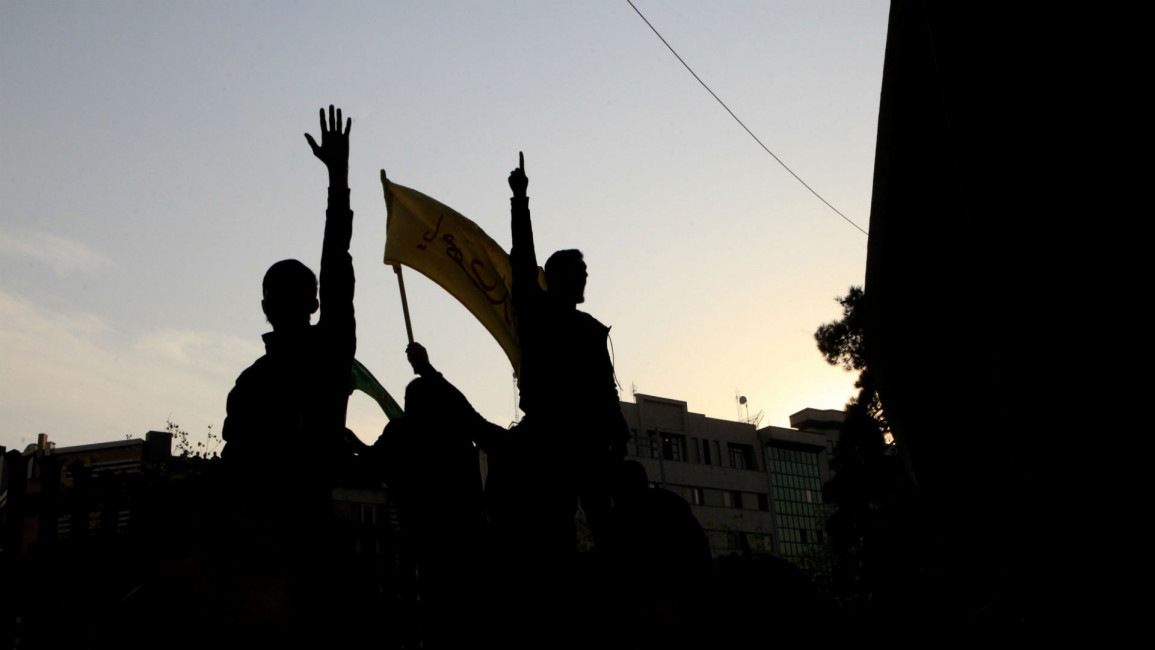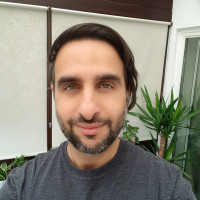
Iran protests lack clear goals and leadership
But today's protests, which have a more social dimension, are also more muddled, taking place in the context of a struggle for power in Tehran and rising American hostility.
The first demonstrations took place on 28 December in Mashhad, the country's second largest town and quickly spread to other cities such as Kermanshah, Hamadan and Rasht before reaching Tehran, with crowds chanting "All Iranians cry out: "Down with high prices" or "Not for Gaza, not for Lebanon, I sacrifice my life for Iran."
The 30 December issue of Bahar newspaper pointed to cyberspace as the origin of the spontaneous demonstrations while also mentioning the initial "role of dissidents and opposition extremists whose aim is to weaken the reformist government" but who "quickly lost their grip on those demonstrations".
Rallying cries have been varied. Some are protesting the high cost of living and the burden of unemployment. Others want a break from the policy of solidarity with the Palestinians.
Confusion has arisen over connecting the social and economic situation in the wake of international sanctions and the disappointing benefits of the nuclear deal, to the country's actions in the region.
Read more: Iranian protests raise tricky questions for US and Saudi policymakers
As a result, foreign policy decisions, especially regarding Palestine and Syria, have been singled out as the cause of the Iranians' plight. This particular framing of the situation is partly due to reports by outlets such as Voice of America, BBC Farsi, Radio Israel in Farsi and dozens of radio and tv channels that have been broadcasting in Farsi from California and London for 40 years.
Former president Ahmadinejad plays his part
On 30 December, Eshaq Jahangiri, Hassan Rouhani's first vice president said that "the demands that have been put forward relate to economic issues but those who appear to be behind the whole affair must be identified; they too should bear the consequences of the fires they've started.
 |
The accumulation of wealth contrasts with the impoverishment of the middle class |  |
"They believe they can target the government. But if social unrest starts and is followed into the streets by the political movement, they will be overcome."
This was in reference to the supporters of former President Mahmoud Ahmadinejad (in office 2005 - 20013) who, thanks to populist appeals, have tried to ride the wave of popular discontent in order to capitalise on it. Coincidentally, corruption charges against his government during his eight years in office are being investigated by the country's highest judicial authority.
Indeed, in the last few months, as the investigation has narrowed in on Ahmadinejad and his inner circle, they have grown more vocal in their protest against the government elected in May 2017, as well as against the whole system and the regime's foundations.
Twitter Post
|
The influential former chairman of the Cultural Heritage Foundation, Esfandiar Rahim Mashaei who was close to Ahmadinejad and who is a target of the corruption investigation, has said in a clip broadcast online, that "Today, in the Islamic Republic of Iran, we are subjected to blatant oppressions and lies."
On 27 December, the day before the first demonstrations, the Supreme Leader Ayatollah Ali Khamenei took a firm stance against Ahmadinejad's recent declarations, saying: "Those who have or had all necessary means to act in this country have no right to represent the opposition."
Unlike the 2009 unrest, which grew out of a demand for largely social changes and for the respect of individual votes, the December 2017 protests are the reflection of genuine exasperation, even though they have received the support from some movements opposing the Rouhani government, as well as from US President Donald Trump, Reza Pahlavi and the western media.
The crowds have been protesting against the economic situation, and their momentum springs from the structural grievances of the lower and middle classes.
On 29 December in Mashhad, the Friday night prayer Imam Ahmad Elmolhoda, made an appeal during his sermon:
"The situation should not reach such a point that the population should feel dispirited and think the only solution is to shout in the streets. Unfortunately today, some of those in charge do not feel concerned by people's problems."
He added: "I am speaking to those who went out into the streets yesterday. Your demands are legitimate. It is right that you should protest against the high cost of living. But we know that the enemy wants to strike us and we should not allow ourselves to have our demands exploited by others."
A focus on welfare reform
In 2009, the lower classes were not prominent participants in the mass demonstrations for more individual liberties which did not bring about regime change. This time, even though the demands are focused on more social issues, they once again fail to unite the population.
Some may be wary of seeing the country descend into the same chaos that is engulfing its neighbours and - key to its success - the movement has not found a political leader it can trust to put across its demands.
The counter-demonstration of Saturday 30 December, while more officially organised, managed to gather hundreds of thousands of people, notably from lower class neighbourhoods.
Twitter Post
|
The polarisation of society is growing more and more visible, however. For some, there are luxury cars and high-rises, while others; millions of citizens, civil servants, retirees, youths, manual labourers, and those with no job stability find it hard to make ends meet each month.
Clashes between different movements within the Iranian government ("moderates conservatives reformists and hardliners") do not clearly reflect the traditional economic concerns of the Left, namely workers, farmers, salaried workers and the unemployed, in opposing a Right which looks after the interests of the rich, property owners, bankers and speculators.
The accumulation of wealth contrasts with the impoverishment of the middle class - the decrease in purchasing power, the rise in unemployment and inflation, making life more difficult and less secure, especially for the young.
Hamid Rassai, a hardline activist from Mashhad, explained (Bahar, 30 December): "They are regular citizens. They are not counter-revolutionaries. This is not a political protest but a social one. Because they have in front of them ministers who have accumulated 30 billion in private wealth while other, simpler people starve and can see the root of the problem. It's a clear repetition of the social unrest that took place under Hashemi Rafsanjani."
Reformists, starting with Mohammad Khatami, Mir-Hossein Moussavi and Hassan Rouhani favour a market economy and the privatisation of industrial, banking, health and higher education sectors. The "conservatives", on the other hand, have strong support among the speculators.
Each of the movements has links to financial powers, such as the Rafsanjani family in the case of the "reformist" movement, or the powerful conglomerates with links to the Astan Quds Razavi foundation - in charge of the gifts made to Imam Reza in Mashhad - which support the "conservatives".
Ahmadinejad too is targeted, despite his populist stance, and members of his inner circle have been dragged through court on serious corruption charges.
Donald Trump in the wings
If popular demands fail to take hold elsewhere in society; the actions of the reformist government fail to raise the standard of living; and if no alternative is found, protesters' grievances risk getting lost in chaotic events that may destabilise the whole country.
US rhetoric is increasingly bellicose, and Donald Trump has challenged the Iran deal since his inauguration. He described the deal signed in 2015 as "one of the worst deals the United States has ever taken part in".
Read more: Iran: Telegram ban lifted only if 'terrorist' content removed
He added, when speaking to the United Nations: "We cannot let a murderous regime continue these destabilising activities while building dangerous missiles… and we cannot abide by an agreement if it provides cover for the eventual construction of a nuclear programme."
On 14 December, US ambassador to the United Nations Nikki Haley presented what she claims were the debris of a missile "made in Iran" and shot by Yemeni rebels in the direction of Saudi Arabia. She then declared to the press corps: "you will see us build a coalition to really push back against Iran."
Two weeks later the US President, who has been threatening to attack what he considers to be a "corrupt and brutal regime" tweeted his reaction to the protest that started in Mashhad on 28 December: "Iranian govt should respect their people's rights, including right to express themselves. The world is watching!"
Mitra Keyvan is an author for Le Monde Diplomatique.
This is an edited translation of an article from our partners at Orient XXI.
Opinions expressed in this article remain those of the author and do not necessarily represent those of The New Arab, its editorial board or staff.



